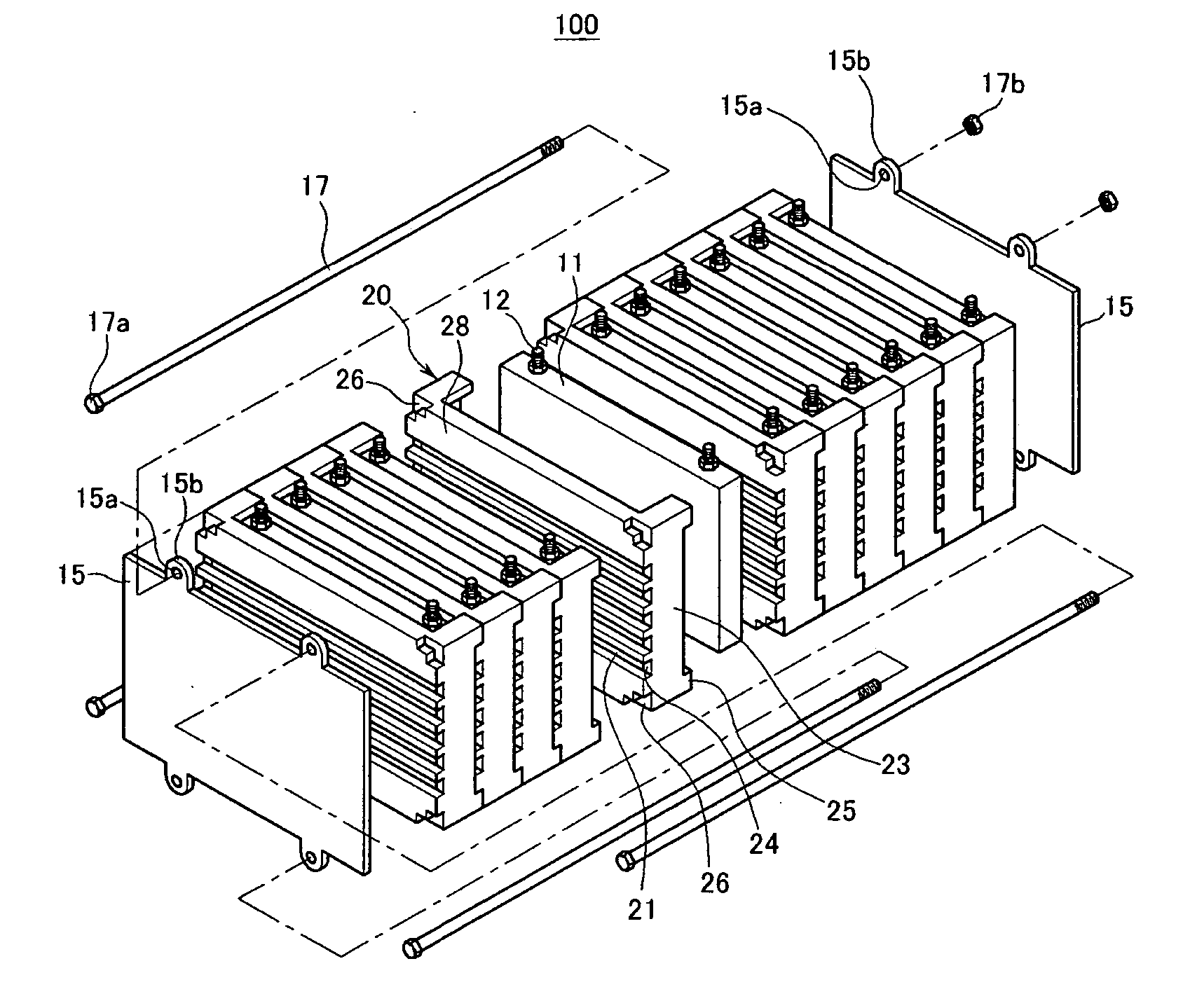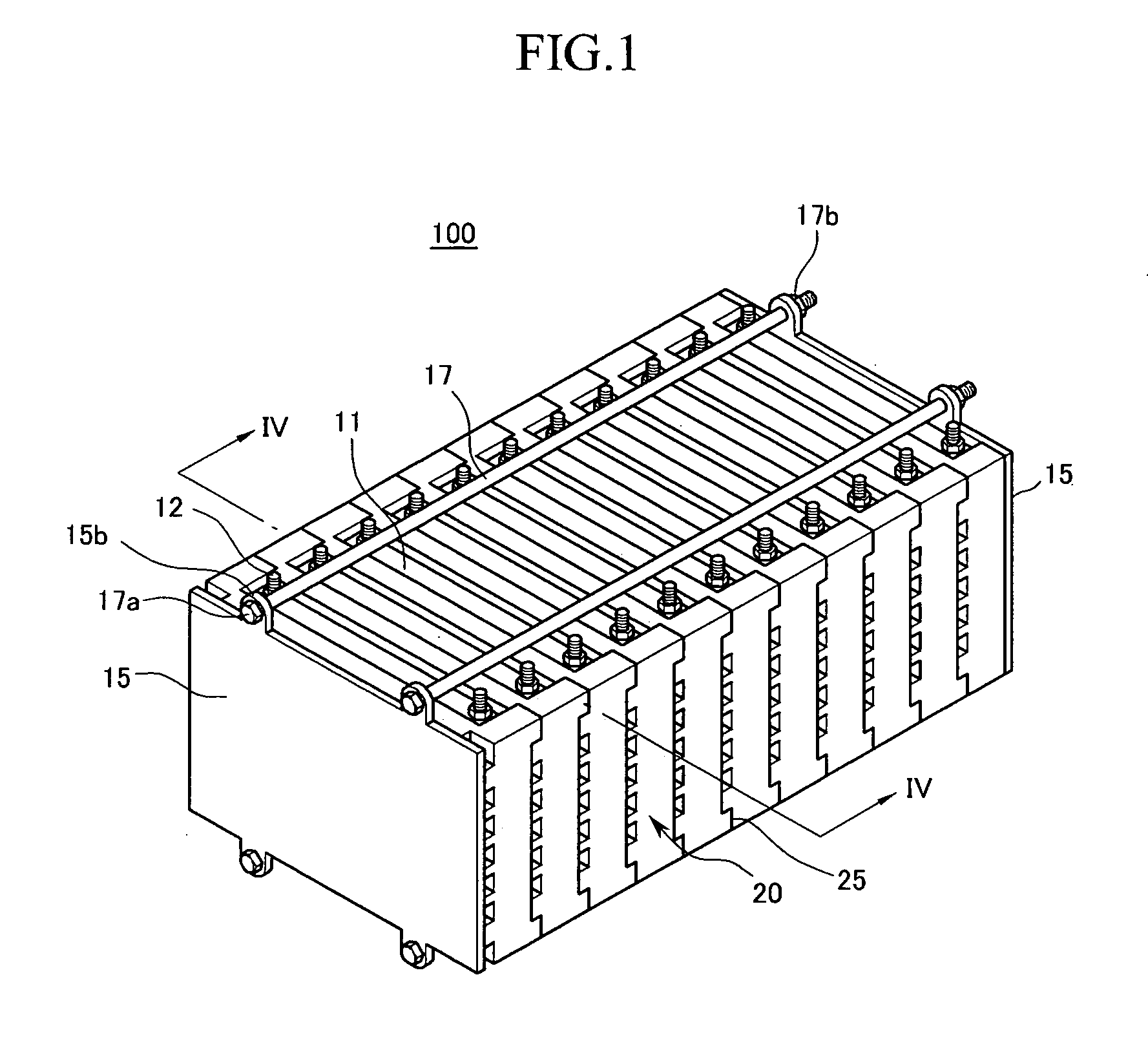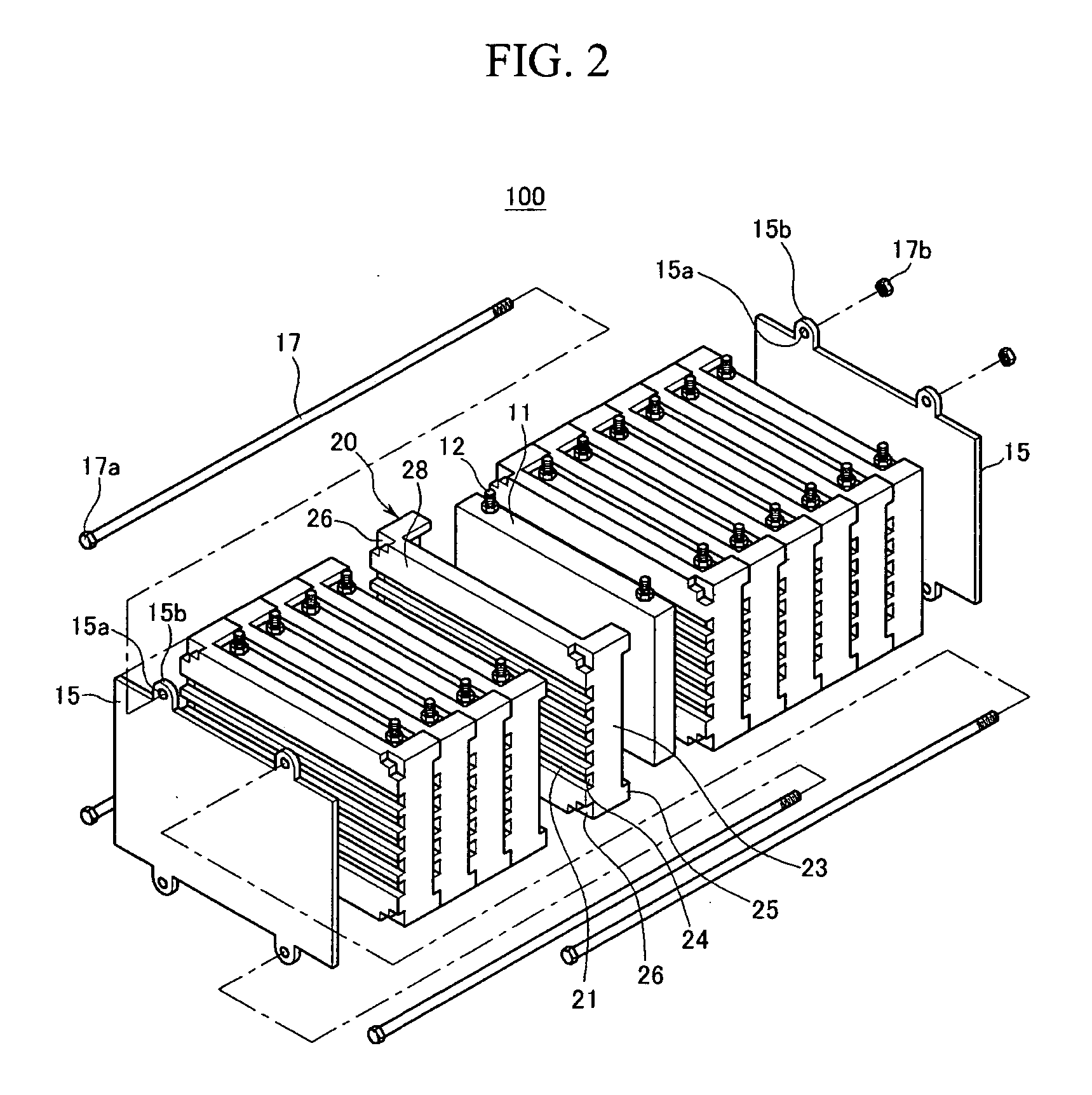Battery module with improved cell barrier between unit cells
a rechargeable battery and cell barrier technology, applied in the field of battery modules, can solve the problems of low heat transfer efficiency, misoperation of the device to which the rechargeable battery module is applied, and significant heat dissipation, and achieve the effect of improving unit cell cooling performance and fixing the cell barrier stably
- Summary
- Abstract
- Description
- Claims
- Application Information
AI Technical Summary
Benefits of technology
Problems solved by technology
Method used
Image
Examples
second embodiment
[0072]FIG. 5 illustrates a battery module 200 in accordance with the present invention, and FIG. 6 is a perspective view depicting the cell barrier 60 of FIG. 5.
[0073] In the drawings, the unit cells 11, the external terminals 12 formed in the unit cells 11, and the end plates 15 disposed in the outermost sides of the unit cells 11 are the same as those having the same reference numerals in the previously described embodiment.
[0074] In the second embodiment, the cell barrier 60 includes plate members 68 having openings 61 and bending elements 63 bent on both edges of the plate member 68.
[0075] In other words, the bending elements 63 are formed on both confronting edges of the plate member 68 to tightly contact both edges of the unit cells 11, when the unit cells 11 are arranged to have their external terminals 12 on top of the unit cells 11. Herein, the length of the bending elements 63 corresponds to the thickness of the unit cells 11. The ends of the bending elements 63 tightly ...
third embodiment
[0086]FIG. 8 is a perspective view illustrating cell barrier of a battery module 70 in accordance with the present invention.
[0087] Only one edge of the plate member 78 of the cell barrier 70 is bent to thereby form a bending element 73.
[0088] The bending element 73 is formed in one side of the unit cells 11, when the unit cells 11 are arranged to have their external terminals come on top of the unit cells 11. The bending element 73 is bent at 90° to tightly contact the side of the unit cells 11.
[0089] At least one opening 71 is formed in the plate member 78 of the cell barrier 70. The opening 71 is formed long from the bending element 73 in one end to the other end of the plate member 78 of the cell barrier 70. In other words, the opening 71 is formed to penetrate one side of the plate member 78 of the cell barrier 70 that contacts the wide front side of the unit cells 11, and one side of the opening 71 is open.
[0090] Thus, the cell barrier 70 is disposed between the unit cells ...
fourth embodiment
[0092]FIG. 9 is a perspective view illustrating a cell barrier 90 of a battery module in accordance with the present invention. An opening 91 formed in the plate member 98 does not penetrate the cell barrier 90 and it is formed in the shape of a groove. Both edges of the plate member 98 are bent to thereby form bending elements 93.
[0093]FIG. 10 is a block view showing how a battery module may be connected to a motor 120.
[0094] The battery modules of the embodiments of the present invention can be used as a power source for driving a motor of a motor-driven device, such as a hybrid electric automobile (HEV), an electric vehicle (EV), an electric cleaner, and an electric scooter.
[0095] As described above, an opening is formed in the cell barrier. The heat transferring efficiency can be improved as the coolant flows through the opening to contact the unit cells and cool down the unit cells.
[0096] Since the structure of the cell barrier 90 can be simplified, it is possible to fabrica...
PUM
| Property | Measurement | Unit |
|---|---|---|
| Shape | aaaaa | aaaaa |
| Width | aaaaa | aaaaa |
| Bending strength | aaaaa | aaaaa |
Abstract
Description
Claims
Application Information
 Login to View More
Login to View More - R&D
- Intellectual Property
- Life Sciences
- Materials
- Tech Scout
- Unparalleled Data Quality
- Higher Quality Content
- 60% Fewer Hallucinations
Browse by: Latest US Patents, China's latest patents, Technical Efficacy Thesaurus, Application Domain, Technology Topic, Popular Technical Reports.
© 2025 PatSnap. All rights reserved.Legal|Privacy policy|Modern Slavery Act Transparency Statement|Sitemap|About US| Contact US: help@patsnap.com



